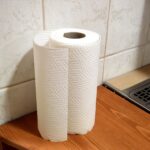
Study: Rainwater No Longer Safe To Drink Anywhere On Earth
- Thomas Nelson
- August 8, 2022
- News
- 0 Comments
Researchers in Europe have made a startling claim based on findings in a new study: that “forever chemicals” like per- and polyfluoroalkyl substances (PFAS) have made rainwater unsafe to drink anywhere on Earth. Their findings were published in Environmental Science and Technology on Tuesday.
PFAS are known to be toxic to humans, having been linked to cancer, birth defects, high cholesterol, and other health conditions. Researchers at Stockholm University and ETH Zurich argued that, because of new insights into the toxicity of PFAS, amounts considered acceptable for human consumption has dropped significantly.
In a press release, lead study author and Stockholm University professor Ian Cousins said that drinking water guidelines for the cancer-causing perfluorooctanoic acid, or PFOA, declined by 37.5 million times in the U.S.
“Based on the latest U.S. guidelines for PFOA in drinking water, rainwater everywhere would be judged unsafe to drink,” Cousins said in the press release.
“Although in the industrial world we don’t often drink rainwater, many people around the world expect it to be safe to drink and it supplies many of our drinking water sources.”
3M, the primary manufacturer of PFAS, makes the claim that they have worked to phase out the manufacture of PFAS, but due to their long-lasting nature, these “forever chemicals” are still present in the atmosphere, allowing it to show up in rainwater around the world.
“The extreme persistence and continual global cycling of certain PFAS will lead to the continued exceedance of the above-mentioned guidelines,” said Martin Scheringer, study co-author in the press release.
“So now, due to the global spread of PFAS, environmental media everywhere will exceed environmental quality guidelines designed to protect human health and we can do very little to reduce the PFAS contamination. In other words, it makes sense to define a planetary boundary specifically for PFAS and, as we conclude in the paper, this boundary has now been exceeded.”
How to avoid PFAS
It is a significant challenge for the consumer to avoid PFAS entirely, especially considering that the chemicals may now be present in unsafe levels even in rainwater. But there are some steps that you can take to limit your exposure, including:
- Not purchasing non-stick cookware, which generally contain PFAS
- Not using microwave popcorn bags
- Avoiding single-use takeout containers, which often contain PFAS
- Replace your carpet with PFAS-free carpeting
- Don’t use Scotchguard, Gorotex, or other PFAS-containing coatings
- Check your cosmetics for PTFE or perfluor in the ingredients – don’t use these!
Read Next: Microplastics Are Now Literally Falling From The Sky

